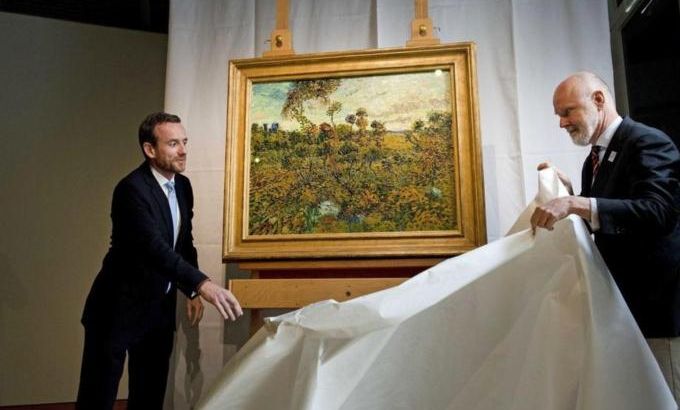Dutch museum unveils long-lost Van Gogh
“Fake” banished to an attic for over a century becomes first painting by the Dutch master to be discovered since 1928.

The Van Gogh Museum in the Dutch city of Amsterdam says it has identified a long-lost Vincent Van Gogh painting that spent years in a Norwegian attic because it was thought to be “fake”.
Axel Rueger, the museum director, described the discovery of the new work by Van Gogh as “a once in a lifetime experience” as the painting was unveiled at a press conference on Monday.
It is the first full-size canvas by the Dutch master discovered since 1928.
Sunset at Montmajour depicts a dry landscape of oak trees, bushes and sky, painted with Van Gogh’s familiar thick brush strokes.
The work, owned by a private collector, will go on show at the Van Gogh Museum later this month for a year.
Museum experts said the painting was authenticated by Van Gogh’s letters, the style and the physical materials used, and they had traced its history.
|
|
| Al Jazeera talks with Van Gogh Museum director |
It can be dated to the exact day it was painted because Vincent Van Gogh described it in a letter to his brother, Theo, and said he painted it the previous day July 4, 1888.
But a new two-year investigation had convinced them, with new techniques of chemical analysis of the pigments showing they were identical to others Van Gogh used on his palette at Arles – including typical discolorations.
An X-ray examination of the canvas showed it was of the same type Van Gogh used on other paintings from the period, such as The Rocks, which hangs in Houston’s Museum of Fine Arts.
“What makes this even more exceptional is that this is a transition work in his oeuvre, and moreover, a large painting from a period that is considered by many to be the culmination of his artistic achievement, his period in Arles,” Rueger said.
As recently as 1991 the Van Gogh Museum had concluded that the painting was not by the Dutch artist when contacted by the owners of the work for an opinion.
The work was later listed in one of Theo’s catalogues, and then reappeared in 1970 in the estate of Christian Nicolai Mustad, an Norwegian industrialist, who had collected the works of Edvard Munch.
The Mustad family believed the painting had been bought by Mustad in 1908 but that he was advised later on that it was a fake or wrongly attributed, and banished it to the attic.